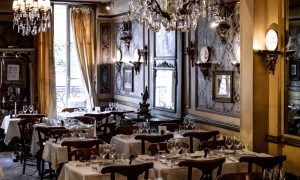Last time we shared the story of how coffee became a thing. Though steeped in legend, there’s plenty of information about how coffee traveled through the Ottoman Empire. By the 1500s, coffee made it to Europe.
Coffee first arrived in Hungary, brought by the Turks during the Battle of Mohács in 1526. It was introduced to Venice the same way the following year. Some Europeans were suspicious, calling coffee the “bitter invention of Satan”. Others loved the drink so much they asked Pope Clement VIII to intervene, and he officially blessed the coffee, declaring “this devil’s drink is so delicious we should cheat the devil by baptizing it!” The first European coffeehouse opened in Venice in 1645.
The Enlightenment
At this point in time, most of Europe was filled with public houses where folks could enjoy a meal, conversation, and beer. Public houses were common places for gentlemen to gather and talk about life, philosophy, politics, and more. With coffee’s growing popularity, coffee houses started springing up across the continent. Folks went from chatting over a beer, which dulls the senses, to conversation over caffeine, a stimulant. In just a generation after the first coffee house appeared in Venice, the European Enlightenment began. People started referring to coffee houses a ‘penny universities’ because men could pay a penny for coffee and have access to conversation, books, games, and news.
Global tensions around coffee
Not everyone wanted an educated public. Charles II of England became suspicious of coffeehouses, stating that they promoted idleness and rumor-mongering. The likely reality is that he recognized their potential as a meeting place for his political opponents. On December 29, 1675, Charles II passed a law to ban coffeehouses. This law was supposed to take effect on January 10th of the following year. Instead, it was rescinded on January 8th because a number of Charles’ advisors loved coffee. England, like many other countries in Europe, didn’t allow women in coffeehouses for the same reasons. Under the guise of discouraging idleness, those in power didn’t want women to be able to meet together and organize.
During this time, the coffee trade was also tense. The Ottoman Empire still controlled coffee farms and production due to coffee’s native range. Growing demand in Europe led coffee growers and producers to be protect of their crops, refusing farm entry to Europeans. Eventually the Dutch stole coffee beans (seeds) that they planted in their colony in Java. From here, coffee spread all around the world. Next time, we’ll learn more about the coffee trade from the 1700s to now.
Out of coffee at home? Pick up one of our award winners!

